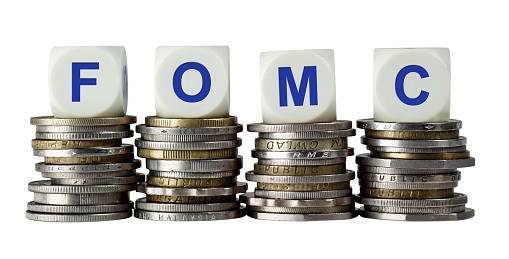US equity index futures currently trade flat and continue to consolidate close to record high levels, with e-mini S&P 500 futures currently trading just to the south of the 4200 mark. Trade is likely to remain indecisive ahead of key stateside events this week including a barrage of earnings, tomorrow’s FOMC meeting and tomorrow’s address in Congress on infrastructure spending from US President Biden. Month-end flows may also distort the price action later in the week. European equities are also conforming to the indecisive risk appetite, though have seen a modest drift lower from yesterday’s closing levels, with the Stoxx 600 down about 0.2% prior to the US open. Modest weakness in European equities seems to reflect a similarly subdued appetite for risk in Asian equities, with Australian, Japanese and Chinese stocks all declining.
Elsewhere, US government bond yields are modestly higher (10-year yields +1.1bps at 1.58%), with the shape of the curve not much changed on the day – as is the case with equities, bonds are biding their time ahead of key events and month-end flows later in the week. Bond market traders also have another incoming auction to take note of, however; $28B in 2-year floating rate notes and $64B in 7-year notes will be sold at 1800BST, an important test of demand for slightly longer-term US debt with yields having backed off from last month’s highs (when 10-year yields went as high as 1.77%). Recall that the most recent 7-year note auction (in February) went very badly and triggered a global bond market rout at the time. Yesterday’s 2-year auction was not great and 5-year auction was average.
Turning to the commodities space; copper continues to rally amid the bullish combination of demand optimism (recent strong US and Chinese data) and supply concerns (threats of port worker strike action in Peru, which supplies one quarter of global copper output), with LME prices approaching the $10K per tonne mark. Gold is subdued with eyes on USD and US government bond market price action in the run up to tomorrow’s key macro events (Biden and the FOMC). Crude oil, meanwhile, is a little higher with WTI back above the $62.00 mark; India consumption concerns amid the Covid-19 outbreak there remain but OPEC’s Joint Technical Committee yesterday opted not to change its oil demand growth, seemingly providing some impetus. Further OPEC+ action lays ahead with the cartel’s Joint Ministerial Monitoring Committee meeting to discuss output policy from 1300BST. Markets do not expect any recommendations from the group to OPEC+ leaders for a change of change.
Turning to FX; USD remains subdued ahead of aforementioned key macro events with the Dollar Index (DXY) continuing to range just to the south of the 91.00 level. Various banks are calling for month-end selling amid portfolio rebalancing after outperformance in US vs global stocks and bonds in April, though such selling may already have been front-run last week or may come once key risk events are out of the way towards the end of the week. US economic optimism remains strong; recent US pandemic news has been positive with New York Governor Cuomo set to further ease pandemic restrictions in the city from May 15th and NIH Director Fauci talking about the country seeing a turning point in the pandemic in a few weeks.
Two G10 central banks set policy today; the BoJ kept monetary policy settings on hold (rates at -0.1%, 10-year yield target still around 0.0%) as expected but came across as a little dovish with a downgrade to its Core CPI forecast in its updated economic outlook for the current fiscal year and heavy caveats added to the bank’s stated expectations for an economic rebound given ongoing pandemic related uncertainty. JPY is suffering slightly as a result, with USDJPY moving from the 108.10s to the 108.30s, though the pair’s main driver is likely to remain US/Japanese rate differentials.
Separately, the Riksbank also kept rates and QE parameters steady and left its repo rate path unchanged for the entirety of its forecast horizon, all as expected. The bank sees a slightly brighter economic outlook but expects inflationary pressures to remain low and reiterated that it maintains the option to cut rates into negative territory if needed (i.e. if inflation confidence is threatened), though is happy to see inflation expectations around 2.0%. SEK is little weaker, with today’s rate decision reiterating in the minds of many analysts that the Riksbank is likely to be one of the later of the developed market central bank’s to start hiking rates, and EURSEK as such continues to hold comfortably above the 10.10 mark.
Turning to the rest of the G10; GBP is modestly firmer versus the buck with GBPUSD having recovered back to the north of the 1.3900 level amid choppy trade that saw it at one point drop as lows as 1.3860. UK CBI Distributive Trades data for the month of April came in significantly firmer than expected this morning, helping add some confidence to the narrative that the UK economy is currently seeing a surge as pandemic restrictions are lifted and the country’s vaccine rollout charges on towards herd immunity, with sterling also having seemed shrugged off the recent barrage of negative press coverage towards PM Johnson in recent days with regards to various tabloid-sequel scandals.
CHF, EUR, NOK and CAD are all flat versus the buck, conforming to the indecisive risk appetite and NZD and AUD are giving back some of yesterday’s gains, despite a lack of fresh new updates from down under and despite strong overnight Chinese data (industrial profits were scorching hot YTD up 137.3%, though this is mostly due to weak base effects on the Q1 2020 Chinese Covid-19 lockdown). Despite this, CNH is a modest underperformer in Asia FX, with some citing concerns regarding Chinese debt manager Huarong; Citi says that Fitch’s downgrade to Huarong’s credit rating to BBB from A signals some potential risks if the Chinese government withholds support, according to their local traders.
Elsewhere in EMFX, HUF is flat despite some MEPs expressing concerns about Hungary’s recovery plan proposal which could reportedly “result in 20% of the funding to disappear in opaque funding structures which are exempt from budgetary control standards” (per Politico), with traders keeping their powder dry ahead of the Central Bank of Hungary rate decision at 1300BST. TRY continues to lick its wounds and recovery, with USDTRY down another 0.6% on the day to close to 8.20 despite fiery commentary from Erdogan with regards to the US’ recent designation of the 1915 Armenia massacre as a genocide. INR continues to trend modestly lower amid positive comments from Indian health officials about an improvement in the oxygen situation in the capital city Delhi and amid ongoing efforts by developed market economies to divert medical supplies to the Covid-19 beleaguered nation. The rand is currently the best performing major Asia currency on the day.
The Day Ahead
There are quite a few events worth keeping an eye on today, even if the broader market tone is likely to remain in wait-and-see mode ahead of tomorrow’s FOMC meeting and Biden’s speech before Congress on the American “Families Plan”. In the US, Case-Shiller and FHFA house price index data for the month of March is out at 1400BST, Conference Board Consumer Confidence data and Richmond Fed data both for the month of April out at 1500BST, and April Dallas Fed Services Revenues and Texas Services Sector Outlook data out at 1530BST. US bond market participants will also be watching the $28B 2-year floating rate note auction at 1630BST and the $62B 7-year note auction at 1800BST. US equity market traders will be kept busy by earnings, with index heavyweights Microsoft and Amazon both set to release earnings after US markets close, as well as numerous other important US companies. Recall that 180 S&P 500 companies report earnings this week alone and earnings impulse is set to be a key driver of stock market risk appetite.
Outside of the US, the Hungarian Central Bank sets policy at 1300BST, at which time the OPEC+ Joint Ministerial Monitoring Committee meeting will also begin – expectations are for no changes to output cut easing guidance though oil traders would do well to expect the unexpected (OPEC+ has surprised on numerous occasions already this year). Oil traders will also be watching weekly API inventories data at 2130BST. At 1330BST, France and Germany present their “Recovery and Resilience Plans” i.e. how they will spend EU Recovery Fund money – EUR could be choppy.




